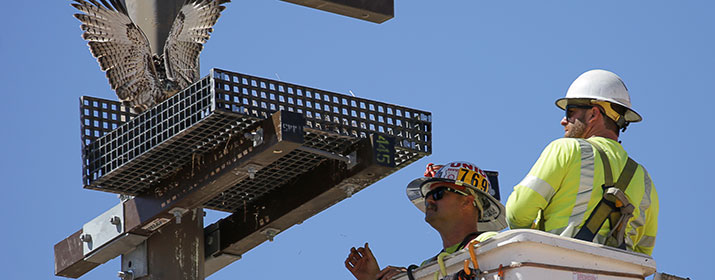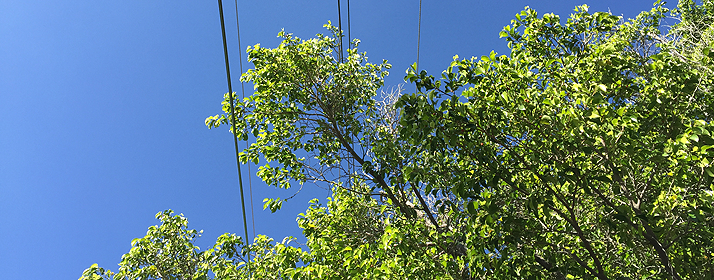
In the five years since Tucson Electric Power stopped burning coal at its largest local power plant, a facility once used for that fuel has become home to some local wildlife.
But the towering A-frame building is a little large for a birdhouse, presenting a unique challenge when a worker discovered a juvenile Red-tailed Hawk that had somehow fallen from a nest atop that structure.
Thankfully, we have some experience assisting raptors.
The team that co-manages TEP’s Raptor Protection Program – Supervisor of Construction and Maintenance Resources Larry Weigel and Analyst Jessica Hayes – right away started running through options. Protecting wildlife from electrical equipment already takes innovation and creativity, so while the situation was unique, it was right in their skill set.
- Return the bird back to its nest? Impractical and unsafe, since the nest was accessible only via catwalks.
- Put the bird in a nest box near ground level? The parents, spooked by campus activity, might have abandoned it.
- Turn it over to a licensed rehabilitation facility? An option, but a return to its parents was still preferred.
Ultimately, the planning team came up with another option: installing a nest platform on an existing pole within sight of the original nest so the parents could feed it until it is able to leave the nest on its own.
As the crew installed the nest box, the mother was seen soaring above, seemingly watching the progress.
The hawk was placed in the nest box and, after a healthy lunch of quail and mice and a short exploration of the nest box, settled in for a nap.
“All indications are they will be reunited soon,” Weigel said, noting that his team will monitor progress in the nest.
“We take great satisfaction in helping to protect these magnificent creatures across the entire region, but this was really special because we had an opportunity to assist right here on campus,” Larry said. “I’m so proud of the continued support for this program and the positive impact we’re able to have in protecting our area’s wildlife.”






